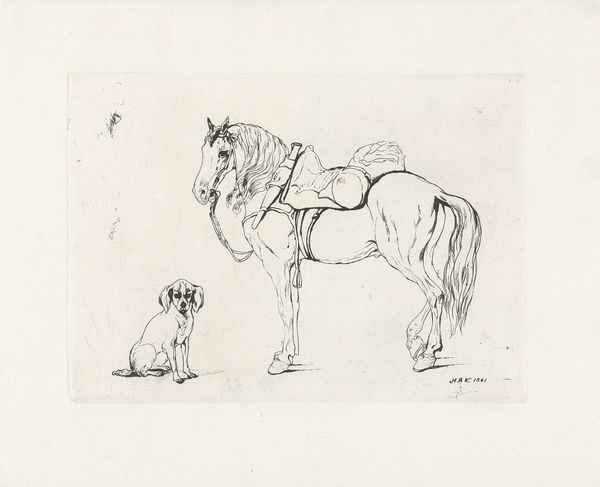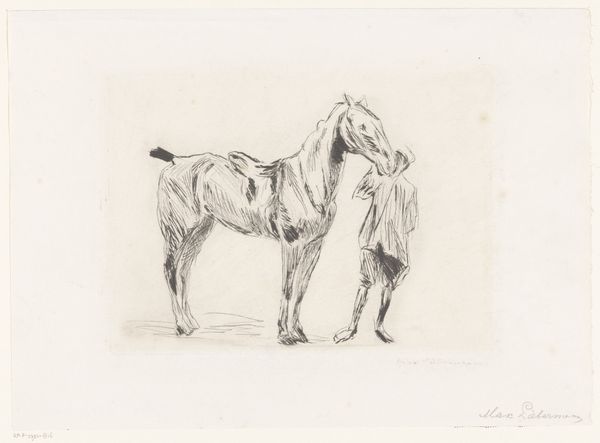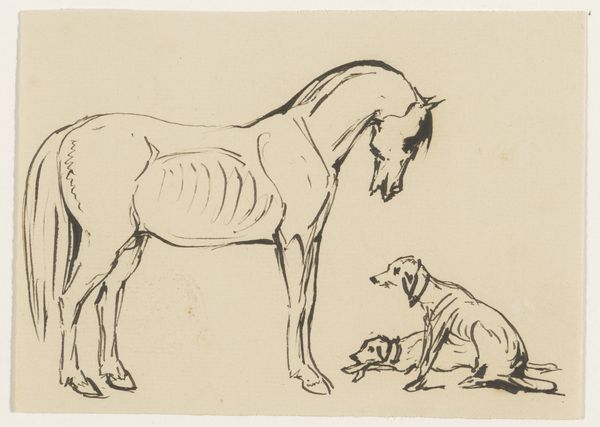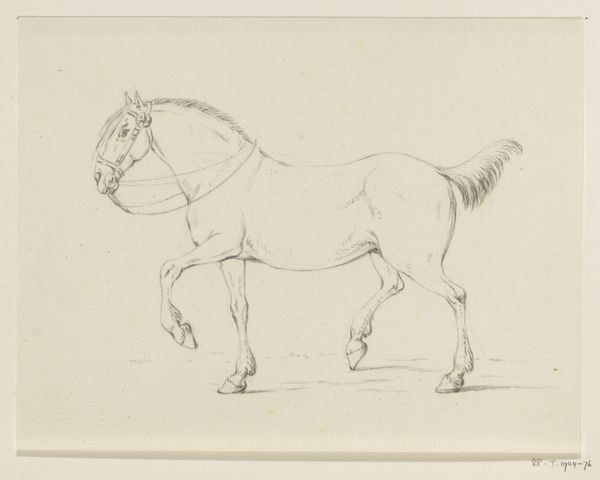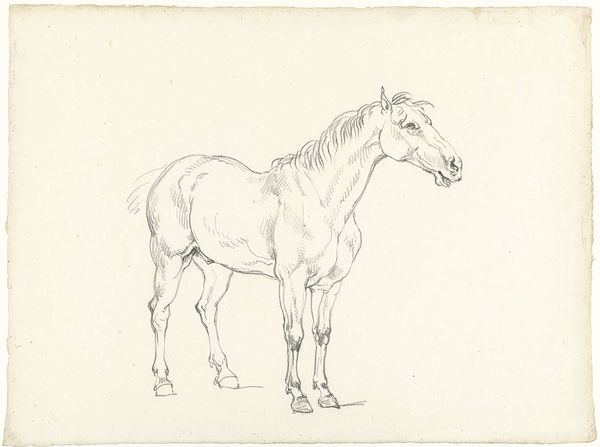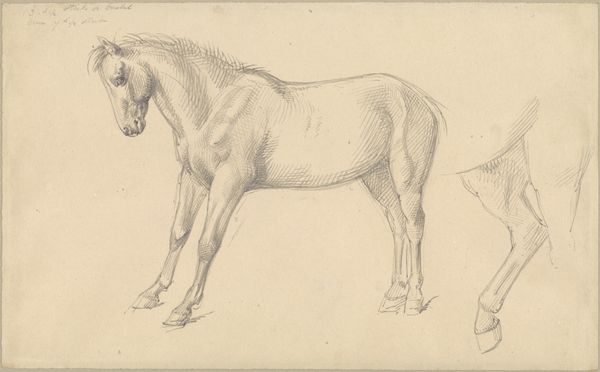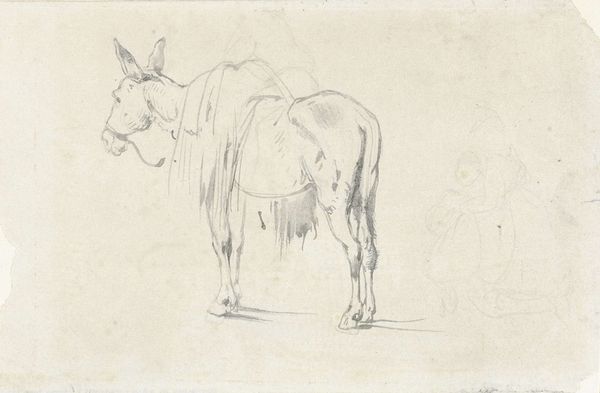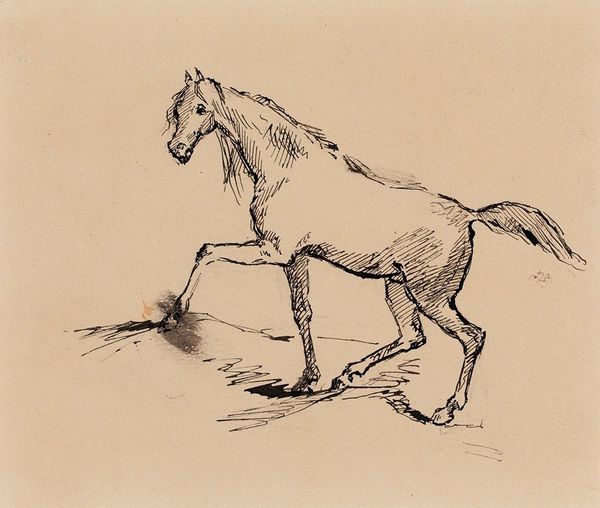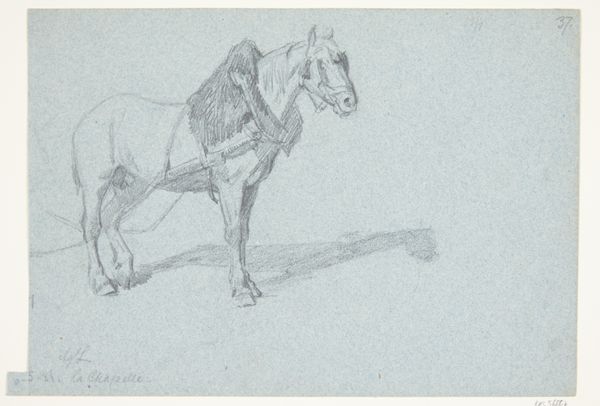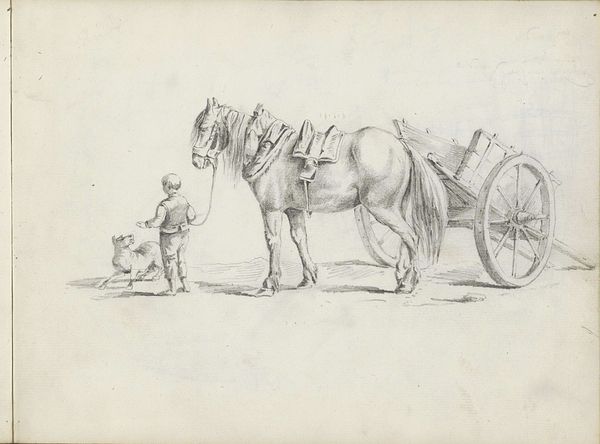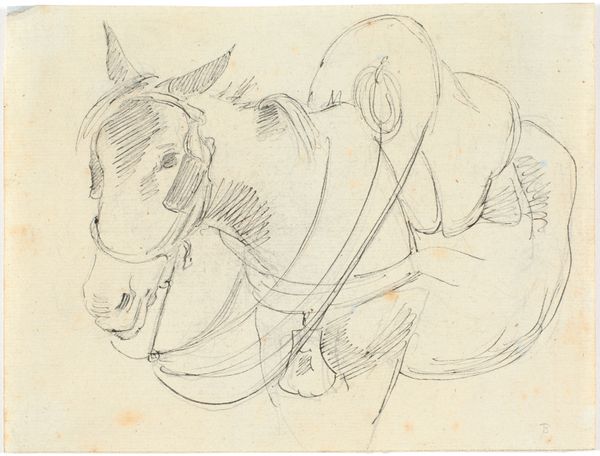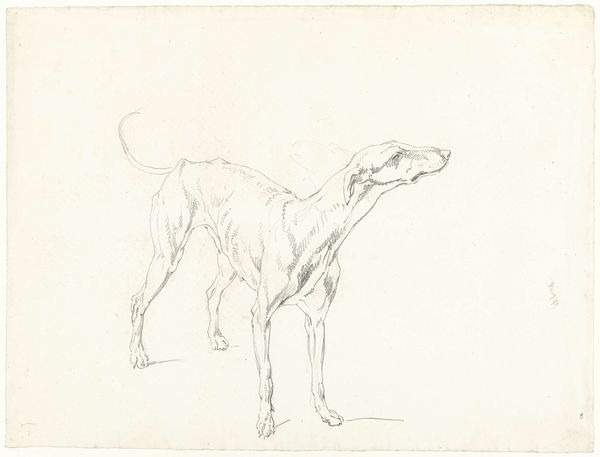
drawing, ink, pen
#
drawing
#
amateur sketch
#
imaginative character sketch
#
quirky sketch
#
animal
#
dog
#
incomplete sketchy
#
landscape
#
figuration
#
ink
#
idea generation sketch
#
sketchwork
#
character sketch
#
dynamic sketch
#
pen-ink sketch
#
horse
#
pen
#
realism
#
initial sketch
Dimensions: height 143 mm, width 199 mm
Copyright: Rijks Museum: Open Domain
Curator: Hendrik Abraham Klinkhamer’s 1841 drawing, executed in pen and ink, titled "Gezadeld paard en hond"—or "Saddled Horse and Dog" in English—awaits our scrutiny. Editor: It’s spare, almost minimalist. The delicate lines give it an unfinished feel, but that only seems to amplify its quiet charm. The contrast between the bulk of the horse and the tiny dog adds an element of surprise, too. Curator: Absolutely. Look at the rendering of the horse’s musculature. Klinkhamer is not just representing forms, but also meticulously delineating structure. The contrast between the smoother rendering of the horse and the almost scribbled textures used for the saddle blanket begs for interpretation. Is it simply a stylistic choice, or a commentary on the contrast between nature and the man-made? Editor: It speaks to the role of animals in 19th-century Dutch society. The saddled horse, of course, signifies status and utility, linking back to land ownership and agriculture. The dog, too, is positioned nearby the horse suggesting perhaps it is a hunting dog; thus animals' place as labor partners and symbols of class. Do we know what social circles Klinkhamer was in? Curator: There’s limited material available about his personal and social life, but this drawing offers an opportunity to engage with broader discourses surrounding Romanticism. Editor: That fits—there is a strong suggestion here, just based on composition and form, that this image touches upon sentimental portrayals of nature and its intersection with societal roles, yes. The expressiveness achieved with so little tone—the careful application of those hatch marks, stipples...they work together to create this distinct image. Curator: The semiotic density within its minimalist frame is astonishing, don't you think? It is as though a very direct but subtle communication about human activity, and our interactions, is happening through animal stand-ins here. Editor: It’s a deceptively simple composition. Considering the time period, I see how one could suggest its cultural relevance in terms of 19th century Romantic sensibilities, where society increasingly became self-aware. Curator: Precisely. A compelling and insightful piece, when examined through a comprehensive framework. Editor: Indeed. A glimpse into a past where ink and paper spoke volumes.
Comments
No comments
Be the first to comment and join the conversation on the ultimate creative platform.
